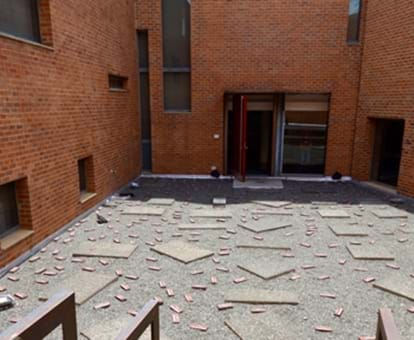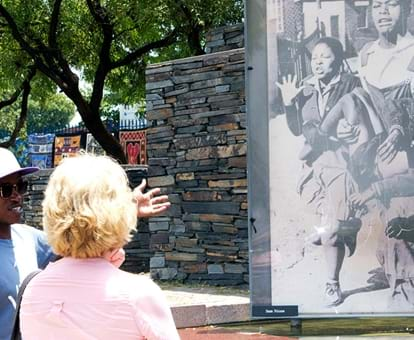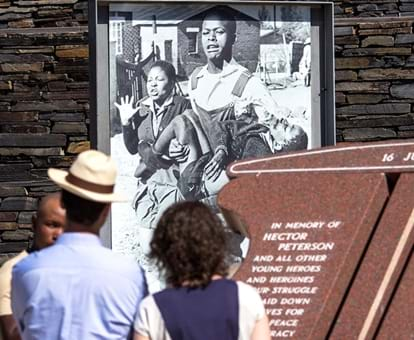By creating an account, I agree to the
Terms of service and Privacy policy
Choose your country and language:
Africa
Americas
Asia Pacific
Europe
TThe Hector Pieterson Museum in Soweto's Khumalo Street recalls the events of 16 June 1976 and the ensuing Soweto Uprising. This museum in Soweto takes the visitor on a journey that includes the build up to a youth rebellion, the events of that fateful day and its aftermath.
TThe Hector Pieterson Museum in Soweto's Khumalo Street recalls the events of 16 June 1976 and the ensuing Soweto Uprising. This museum in Soweto takes the visitor on a journey that includes the build up to a youth rebellion, the events of that fateful day and its aftermath.
TThe Hector Pieterson Museum in Soweto is a short distance from where police opened fire on students on 16 June 1976 during a protest against the introduction of Afrikaans as a language of instruction in township schools.
On the morning of Wednesday, 16 June, scholars in Soweto assembled in school grounds before beginning their march to Orlando Stadium where a protest against Afrikaans was to be held. On the way, not far from Phefeni Junior Secondary School on Vilikazi Street, schoolboy Hector Pieterson joined a group of several thousand scholars.
After a brief standoff, police opened fire and the photograph of a dying Hector Pieterson, cradled in the arms of a fellow student with his terrified sister running beside them, flashed around the world. This image, taken by news photographer Sam Nzima, became a symbol of the resistance against apartheid. Today, June 16 is commemorated as Youth Day in South Africa.
EEvents of that fateful day are remembered at the Hector Pieterson Museum, the premier heritage site in Soweto. Situated in Orlando West on Khumalo Street, it is a two-storey red brick building with a Hector Pieterson memorial on the grounds.
Inside, opposite the bookshop, is a garden of remembrance with the names of all those who died in the uprising inscribed on loose bricks.
On the walls of this museum in Soweto are enlarged photographs of the events of that day as they unfolded with extensive commentary together with audio-visual presentations.
From this Soweto museum it is a short walk along a tree-lined avenue to the fine restaurants and Mandela House national heritage site on Vilikazi Street.
Related Articles




